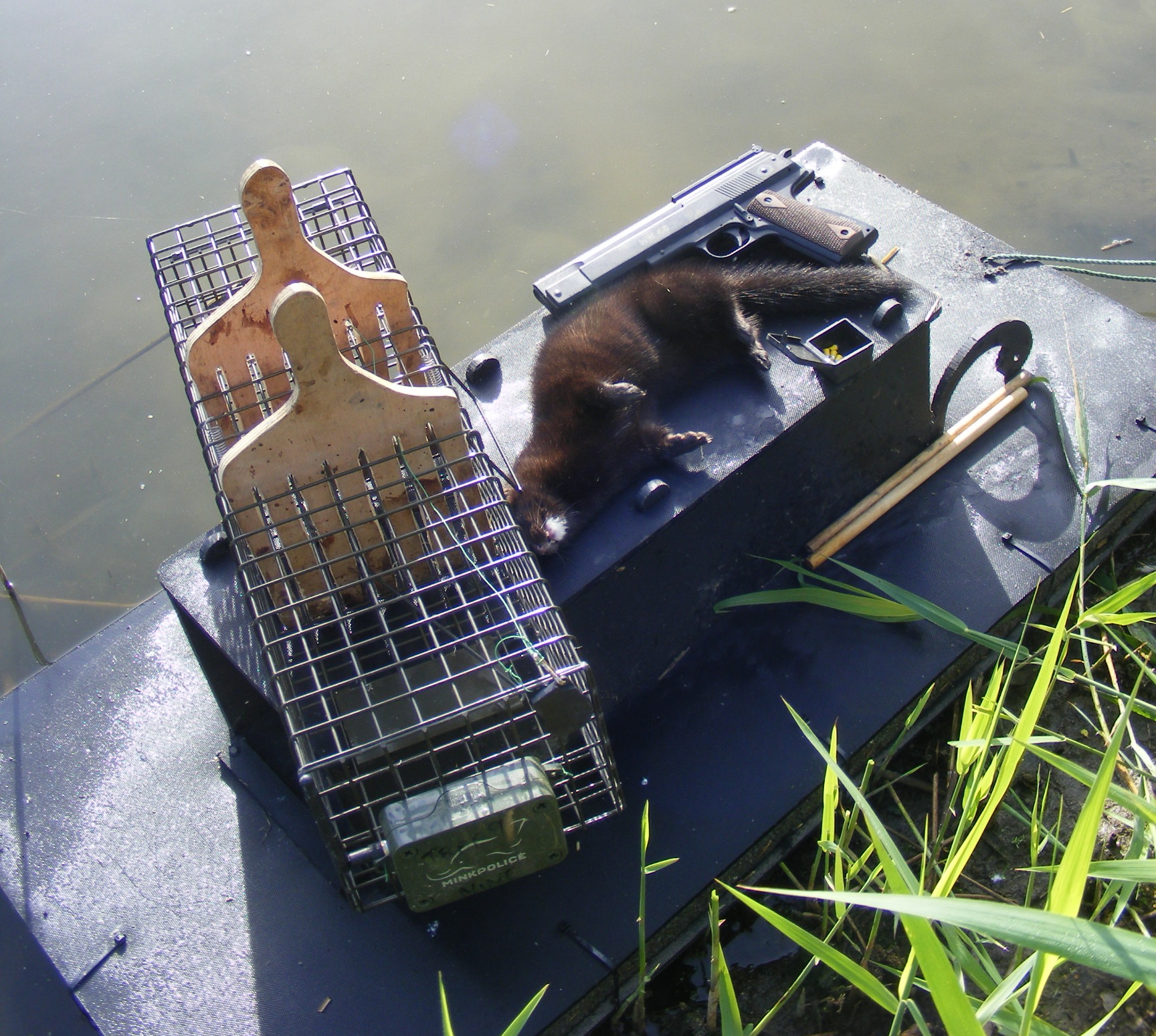Progress & Evolution in Mink Trapping
There are many ways in which invasive animals can be removed from a given area, but most methods end up having a negative impact on non-target animals and some (e.g. rat poison) result in an unpleasant end for the intended target species. Fortunately, however, American mink allow us to remove them in a humane way and with zero mortality to other species. American mink are insatiably inquisitive, and can’t resist investigating covered spaces, nor climbing on floating objects. The Game and Wildlife Conservation Trust (GWCT) devised a way of taking advantage of these characteristics to detect and/or catch American mink alive – the Mink Raft. Elegantly simple, the raft is a floating platform with a tunnel on top. The tunnel is tall enough and long enough to cover a standard cage trap – a device with an entrance at one end and, inside, a treadle that causes the door to close when stepped on.
For reasons of animal welfare, British law states that cage traps must be checked at least once in each 24-hour period. This requirement demanded a considerable commitment from those maintaining cage traps, so mink rafts were normally operated in ‘monitoring mode’, whereby a damp clay pad replaced the trap in the tunnel, and trappers merely had to check the pad for mink footprints periodically. If mink prints were discovered, the trap was reinstated and then visited daily for perhaps two weeks, by which time the American mink had either been caught or was probably miles away.
This method of raft use is still common in Britain today, but it does still demand quite frequent trap visits and has the disadvantage that the raft is able to catch a mink for just a small proportion of the time. However, thanks to the invention of a device called a trap alarm, an increasing number of mink rafts nowadays are able to operate in ‘catching mode’ continuously (i.e. the raft is equipped with a trap open for business), and this revolutionises our ability to catch any mink that might visit a raft. Trap alarms continuously check whether the trap door is open, and notify the trapper by text message and email immediately the door closes. This has many advantages, among which improved animal welfare (because animals are in the trap for much less time on average) and the need for fewer trap visits are perhaps the most important. It is not just American mink that will spend less time in a trap, as when mink numbers fall, the number of other species caught, such as water voles and moorhens, will increase and they can be released more quickly. Trap alarms can be retro-fitted to existing traps and, in modern parlance, transform a standard cage trap into a smart trap.




